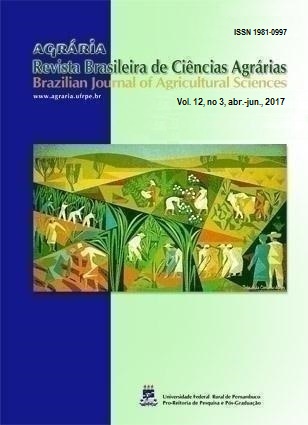Biometric characteristics of fruits and physiological characterization of seeds of Physalis species (Solanaceae)
DOI:
https://doi.org/10.5039/agraria.v12i3a5447Keywords:
oBrix, emergency, Physalis ixocarpa, P. peruviana, P. angulataAbstract
The Physalis genus includes species with nutraceutical uses and is typically identified by morphological characteristics. In Brazil and the world, the best-known species are P. angulata, P. peruviana and P. ixocarpa emerging more in the production of fruit used for various purposes. In this scenario, the physicochemical characteristics of mature fruits and seeds, are extremely important, especially for commercial purposes as well as the separation and identification of promising genotypes. Biometric analysis of ripe fruit, measuring the oBrix, seed analyses were performed and compared four potential species Physalis grown in Feira de Santana, Bahia, Brazil. Principal component analysis showed two of the ten analyzed characteristics that represent about 98% of the total variance observed between species, namely: °Brix and E15 (Emergency in 15 days after sowing). P. ixocarpa fruit stood out in relation to other species, reaching the highest average for the biometric data.
Downloads
Downloads
Published
How to Cite
Issue
Section
License

This work is licensed under a Creative Commons Attribution-NonCommercial 3.0 Unported License.


